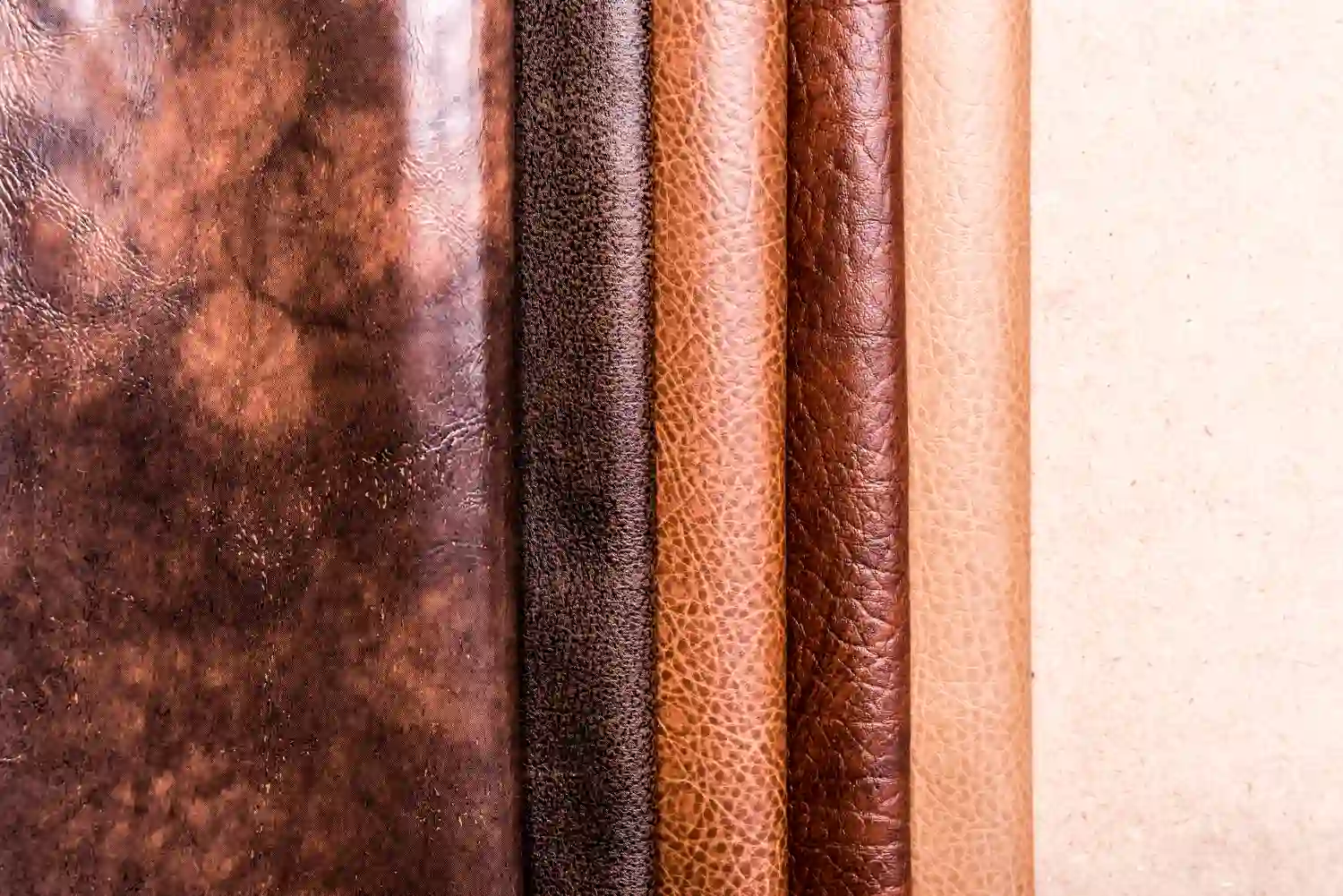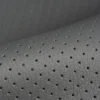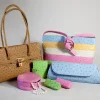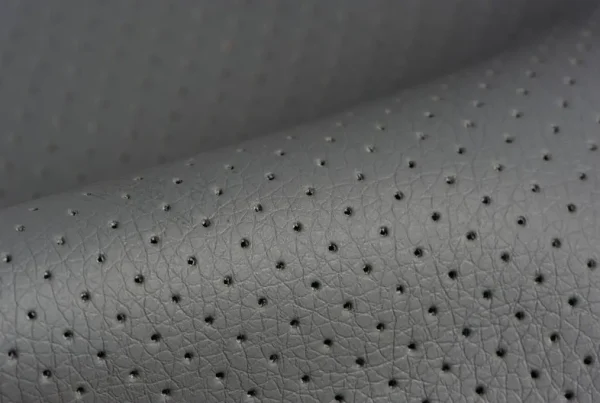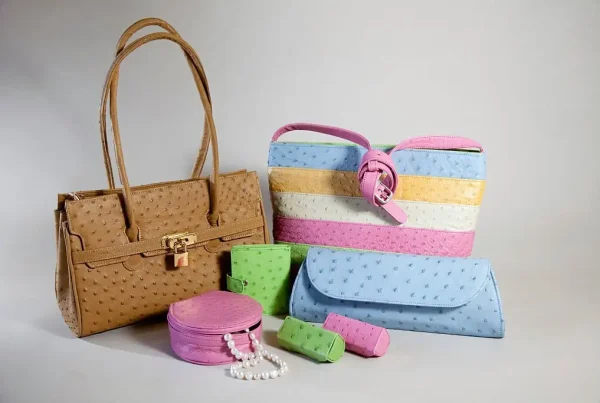I. Introduction
Microfiber leather is a revolutionary synthetic material engineered to mimic the look and feel of genuine leather while offering distinct advantages. Composed of ultra-fine microfibers, this versatile material is renowned for its durability, water resistance, and eco-friendly attributes. Unlike traditional leather, micro leather is cruelty-free and does not require animal-derived components.
In recent years, the popularity of microfiber leather has surged across diverse industries. Fashion designers incorporate it into handbags, shoes, and clothing, appreciating its affordability and customizable options. The automotive industry embraces microfiber leather for upholstery due to its luxurious appearance and long-lasting performance. Moreover, microfiber leather has found its way into furniture and home décor, elevating interiors with its exquisite texture and ease of maintenance.

II. What is Microfiber Leather
Microfiber leather is a remarkable synthetic material crafted from ultra-fine microfibers, typically made from polyester and polyurethane. These microfibers are meticulously woven and bonded together, creating a durable and leather-like texture. The material undergoes a precise manufacturing process to achieve uniformity in thickness and appearance, resulting in a consistent and high-quality product.
Micro fiber leather boasts several key properties that set it apart from natural leather. Firstly, it is exceptionally durable, resistant to wear and tear, and less prone to cracking or fading. Its water-resistance makes it ideal for various environments, as it repels moisture and is easy to clean. Moreover, it is a cruelty-free and vegan option, making it an ethical choice for those concerned about animal welfare. Additionally, microfiber leather is more cost-effective than genuine leather, offering similar aesthetics and performance at a more affordable price point.
The advantages of micro leather over traditional leather have garnered significant attention, making it a preferred choice for consumers and industries alike. Its versatility, performance, and ethical appeal contribute to its rising popularity, transforming the landscape of leather-like materials and redefining our approach to sustainable and cruelty-free alternatives.
III. The Manufacturing Process
The creation of micro leather involves a meticulous selection of microfiber materials. These microfibers are typically composed of polyester and polyurethane, chosen for their strength, flexibility, and fine texture. The quality and composition of these microfibers play a crucial role in determining the final characteristics of the micro leather.
Once the microfiber materials are selected, the spinning and weaving process begins. The microfibers are spun into yarns, which are then woven together to form a strong and uniform base material. This weaving process ensures that the microfibers are evenly distributed, providing consistent texture and thickness throughout the micro leather.
The final stage of manufacturing involves bonding and reinforcement techniques. The woven microfiber material is bonded with a polyurethane backing, enhancing its durability and stability. Reinforcement techniques such as embossing or perforating may also be applied to add texture and further strengthen the micro leather.

IV. Uses and Applications
Fashion and Accessories:
Micro fiber leather has found versatile applications in the world of fashion and accessories. Designers and brands are increasingly incorporating microfiber leather into handbags, wallets, shoes, and belts, embracing its soft texture, durability, and wide range of color options. Fashion-forward consumers appreciate the affordability and eco-conscious aspects of microfiber fabric, making it a popular choice for those seeking cruelty-free and sustainable alternatives.
Automotive Upholstery:
The automotive industry has also embraced micro fiber leather for upholstery and interior trim. With its luxurious appearance and resilience, microfiber leather offers a cost-effective solution compared to genuine leather. Its water-resistant properties make it suitable for automobile interiors, effectively resisting spills and stains while maintaining a sophisticated look. Car manufacturers and enthusiasts alike appreciate the versatility and practicality of microfiber leather in elevating the overall driving experience.
Furniture and Home Décor:
In the realm of furniture and home décor, microfiber fabric has become a preferred choice for upholstery and embellishments. Its soft and smooth texture complements various design styles, while its easy maintenance makes it a practical option for busy households. From sofas and chairs to headboards and accent pieces, microfiber leather brings a touch of elegance and practicality to homes, creating inviting spaces with enduring appeal.
V. Advantages and Benefits
Durability & Longevity:
Micro fiber leather boasts remarkable durability and longevity, making it a smart investment for consumers and industries alike. The tightly woven structure of microfibers enhances its resistance to wear and tear, ensuring it withstands daily use without cracking or fading. This exceptional durability allows microfiber leather products to maintain their original appearance and performance over time, providing long-lasting value to users.
Environmental Sustainability:
One of the most significant advantages of microfiber leather lies in its environmental benefits and sustainability. As a synthetic material, microfiber leather does not rely on animal-derived components, making it a cruelty-free and vegan alternative to genuine leather. Moreover, its production process consumes fewer resources and produces less waste compared to traditional leather, reducing its overall environmental impact. Ethical consumers and industries seeking eco-conscious materials are increasingly turning to microfiber leather as a sustainable choice.
Cost-Effectiveness:
Microfiber leather offers cost-effectiveness and accessibility, providing a budget-friendly option without compromising on quality and aesthetics. Its production efficiency and synthetic nature make it more affordable than genuine leather, enabling a wider range of consumers to enjoy luxurious-looking products without breaking the bank. The accessibility and diverse applications of microfiber leather in various industries ensure that it remains a versatile and attractive option for consumers seeking style, performance, and value.
VI. Comparison with Genuine Leather
When comparing micro fiber leather with genuine leather, there are both similarities and differences to consider. Microfiber leather shares striking resemblances with its genuine counterpart in terms of appearance, texture, and even some performance aspects. The meticulous manufacturing process ensures that microfiber leather closely mimics the luxurious look and soft feel of genuine leather. However, a key distinction lies in the sourcing of materials, as microfiber leather is entirely synthetic, while genuine leather is derived from animal hides.
Micro leather addresses ethical and environmental concerns surrounding genuine leather production. As a cruelty-free and vegan alternative, micro fiber leather appeals to those who seek compassionate choices without compromising on style and quality. Additionally, its synthetic nature reduces the demand for animal-derived materials, contributing to the preservation of wildlife and the environment. By opting for micro fiber leather, consumers and industries actively support a more sustainable and eco-friendly approach to leather-like materials, aligning their values with ethical and environmental consciousness.

VII. Caring for Micro fiber Leather
To maintain the pristine condition of micro fiber leather, regular cleaning and proper maintenance are crucial. Cleaning tips include using a soft, damp cloth to wipe away dust and dirt gently. For spills or stains, quickly blot the affected area with a clean cloth and mild soap solution, avoiding excessive moisture. Allow the micro fiber fabric to air dry naturally, keeping it away from direct heat or sunlight, which can cause damage.
Preventing common issues ensures the long-lasting beauty of microfiber fabric. Avoid sharp objects or abrasive materials that may scratch or damage the surface. Use coasters and placemats to protect microfiber leather furniture from spills and scratches. Additionally, keep pets away from microfiber leather items to prevent potential damage from their claws.
VIII. Innovations in Microfiber Leather
The world of microfiber technology continually evolves, bringing forth exciting advancements. Improved microfiber compositions offer enhanced durability, making microfiber fabric even more resilient and long-lasting. Innovative finishes and embossing techniques provide unique textures and aesthetics, broadening the design possibilities of microfiber leather.
Microfiber leather’s versatility opens doors to new applications and possibilities for the future. As research and development continue, we can expect to see micro fiber leather being used in more diverse industries, such as fashion, interior design, and even in innovative architectural applications. As consumer demand for sustainable and cruelty-free materials rises, microfiber leather is poised to play an increasingly prominent role in shaping a more ethical and environmentally-conscious future.
IX. Conclusion
In conclusion, microfiber leather is a revolutionary synthetic material crafted from ultra-fine microfibers, meticulously woven and bonded to mimic the look and feel of genuine leather. Its ethical appeal, durability, and water-resistance make it a compelling choice in various industries.
The versatility of micro fiber leather shines through in fashion, automotive upholstery, and furniture, where it elevates designs with elegance and practicality. As we navigate towards a more sustainable and compassionate future, microfiber leather stands as a beacon of style, performance, and conscious decision-making, inspiring a shift towards ethical and eco-friendly choices in the world of leather-like materials. Its potential for continued innovation makes it an exciting prospect, paving the way for a brighter and more responsible tomorrow.
FAQs:
Is Microfiber Leather Waterproof?
Microfiber leather isn’t inherently waterproof, but its synthetic composition grants it water-resistant properties. While it can repel light moisture, extended exposure or heavy rain might result in absorption unless treated with a waterproof coating.
Is Microfiber Leather Vegan?
Absolutely, microfiber leather is vegan-friendly. Crafted from synthetic materials like polyester and polyurethane, it avoids animal products or by-products in its production process.
What is Micro Leather Fabric?
Micro leather fabric, a synthetic material composed of fine fibers, usually polyester and polyurethane, emulates the texture and look of genuine leather. Renowned for its durability and gentle touch, it finds common use in upholstery, clothing, and accessories.
Microfiber Leather vs Cowhide Leather: Which One Excels?
The microfiber leather vs cowhide leather debate hinges on personal preferences. Microfiber stands out for its durability, affordability, and vegan nature, while cowhide presents an authentic, luxurious texture.
